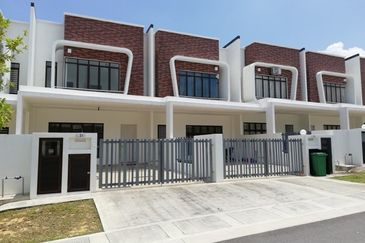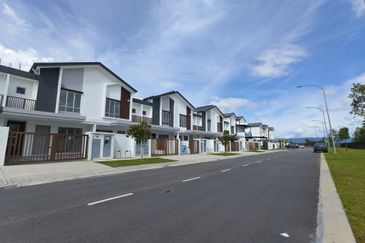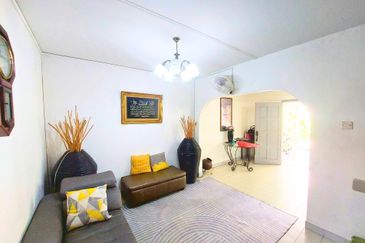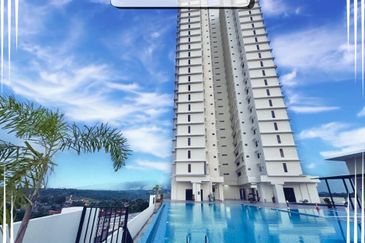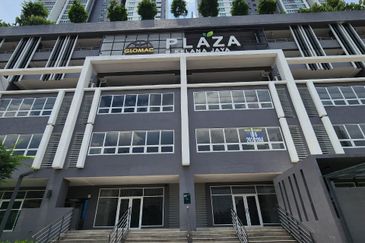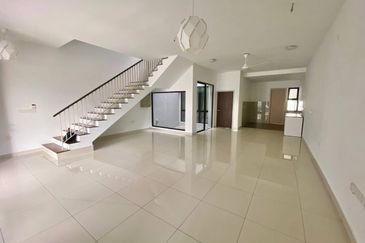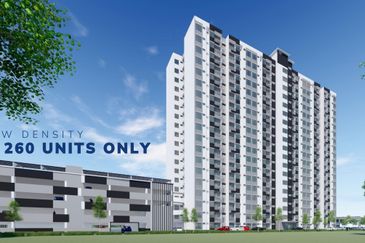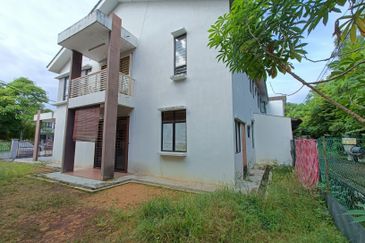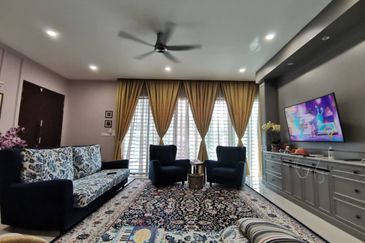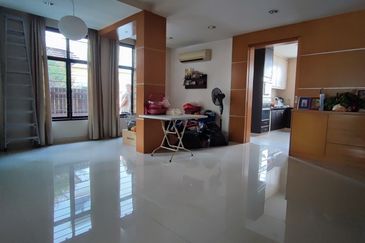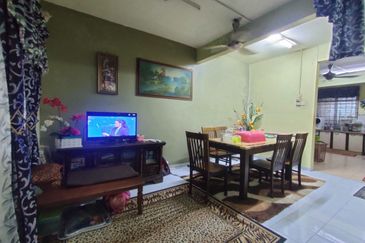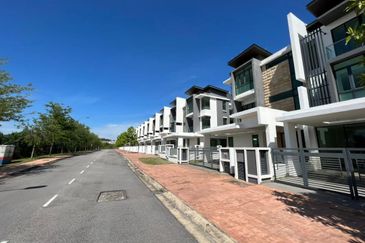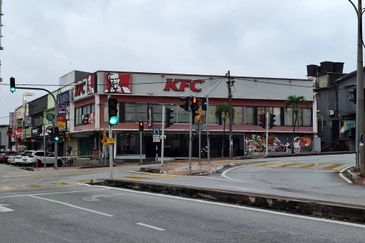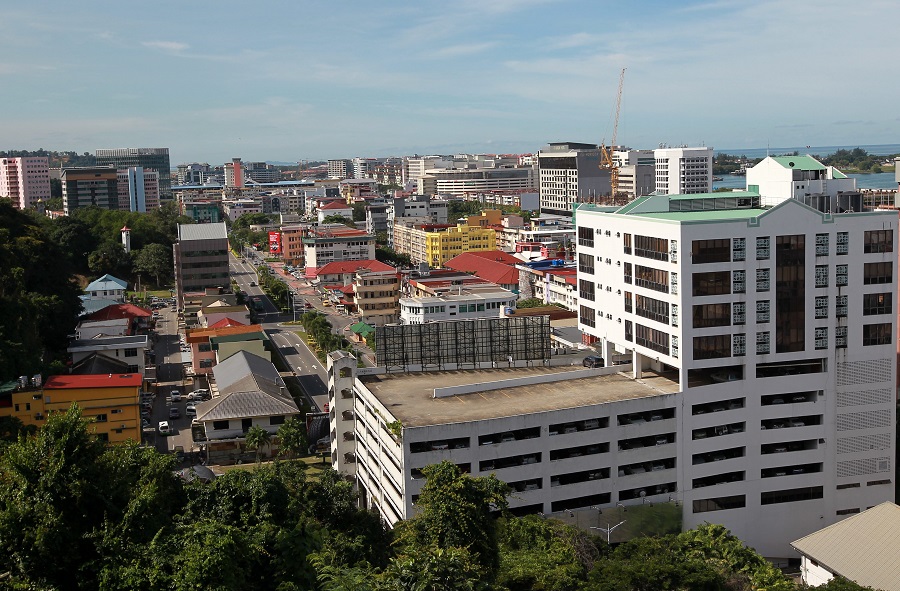
SABAH, in particular its capital Kota Kinabalu, was not spared the effects of the cooling measures introduced to curb escalating property prices, resulting in a slower property market last year, with fewer transactions and launches.
Kota Kinabalu was the largest contributor to the residential subsector, with 330 transacted units out of a total of 1,175 for the state, or 28.09%, in 3Q2015, based on National Property Information Centre (Napic) data. During the quarter, the total transacted value in the subsector was RM156.4 million, compared with RM374.98 million for the state as a whole.
Knight Frank Malaysia (Sabah branch) research executive Welton Chin says the overall residential property segment saw a drop in both volume and value of transactions due to global and domestic market uncertainties. Depressed crude oil prices, political instability, the weakening ringgit and stringent lending requirements were the main reasons. The volume and value of residential transactions declined by 29% and 24% compared with the preceding year, from 468 transactions valued at RM204.75 million in 3Q2014, to 330 transactions worth RM156.40 million in 3Q2015.
 Despite the downturn, 2 to 3-storey terraced houses saw positive movement as they have become increasingly popular, especially for first-time homebuyers and young families, over the last few years. Total value of transactions for these types of houses increased by about 62% in 3Q2015, compared with the preceding year, Chin says.
Despite the downturn, 2 to 3-storey terraced houses saw positive movement as they have become increasingly popular, especially for first-time homebuyers and young families, over the last few years. Total value of transactions for these types of houses increased by about 62% in 3Q2015, compared with the preceding year, Chin says.
However, the high-rise residential segment dropped significantly by 52% in terms of volume and value of transactions, “primarily due to an undersupply of new projects being launched throughout the year”. Inflated land and construction costs also caused developers to postpone new launches.
Chin is “cautiously optimistic” about the overall outlook for the residential property market in Kota Kinabalu. Local consumers are generally more careful with their spending due to the rising cost of living, economic uncertainties and weaker job market. “On the other hand, opportunities have arisen for foreign investors with good purchasing power to look out for good deals in both the primary and secondary markets, given the weak ringgit, while developers are offering more attractive incentives in this challenging market,” he says.
On a brighter note, Metro Homes Sdn Bhd senior group manager Richard Tokuzip observes that response in the fourth quarter seemed to have picked up.
“The overall sentiment has been stable in the primary market in Kota Kinabalu except that there was not much choice in 2015, with most of the projects consisting of remaining units from launches in 2014,” he says.
Challenges in housing sector
Some challenges the Kota Kinabalu housing market faced in 2015 — and will continue to do so — include tight lending restrictions, the impact of the Goods and Services Tax, and the rising cost of living.
Says Chin: “Both developers and buyers are currently facing lending constraints. The cooling measures introduced by Bank Negara have been successful in reducing property speculation and household debt. However, this has significantly reduced the amount of transactions in the primary market. Also affecting developers is the impact of GST and a weak ringgit, which has escalated construction costs.”
Plans for new project launches have been affected by the decline in mortgage approvals for buyers.
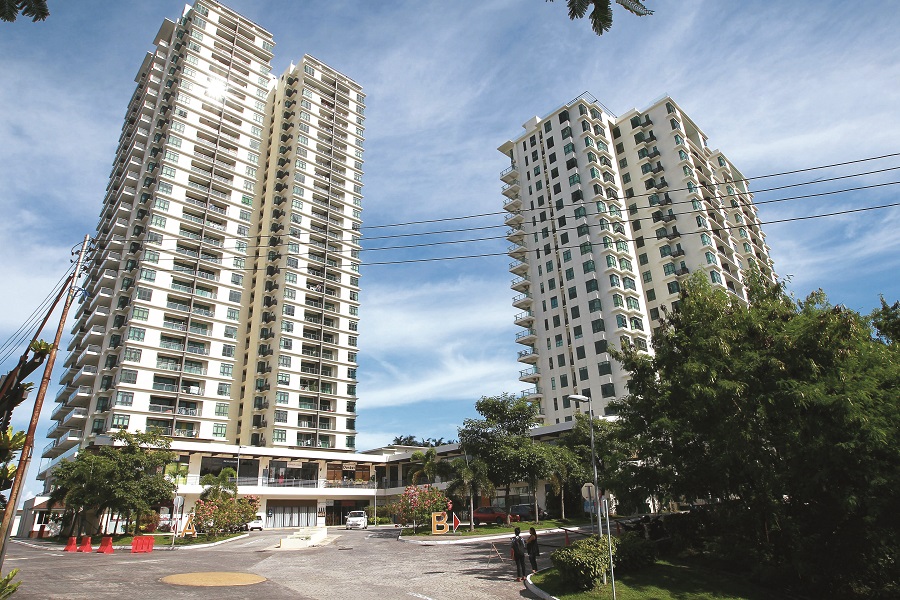
Like the primary market, the secondary market has also been slow due to difficulties in getting loan approvals and obtaining properties at market value, says Tokuzip.
The Sabah Housing and Real Estate Developers Association has stated that less than RM1.5 billion of projects were launched in 2015, compared with RM4.6 billion in 2014 and RM7.56 billion in 2013.
“With a limited supply of new homes, home prices are holding stable and we have not seen any degradation in values. There has been no significant new launches of projects by developers in Kota Kinabalu [in 2015] but rather, new phases and balance units in large schemes, so competition is immaterial,” says Chin.
He says there is pent-up demand across all residential subsectors, but banks will need to loosen their grip on lending conditions, or incentives such as the developer interest bearing scheme (DIBS) will have to be reintroduced to facilitate buyers.
 “We don’t believe that the current planned supply meets the demographic demand for housing in Kota Kinabalu. According to census statistics, the city’s population growth rate is 2.4% per annum or 11,000 people. The average household size is 5.5 persons per household so the demand for housing in the city is 2,000 units per annum. Based on Napic and Knight Frank Research, about 4,318 units of new residential supply were planned to complete between 2015 and 2017, leaving a shortfall of some 1,682 units over that period,” notes Chin.
“We don’t believe that the current planned supply meets the demographic demand for housing in Kota Kinabalu. According to census statistics, the city’s population growth rate is 2.4% per annum or 11,000 people. The average household size is 5.5 persons per household so the demand for housing in the city is 2,000 units per annum. Based on Napic and Knight Frank Research, about 4,318 units of new residential supply were planned to complete between 2015 and 2017, leaving a shortfall of some 1,682 units over that period,” notes Chin.
Meanwhile, Tokuzip says the main challenge these days is getting mortgage approvals for high-margin loans and the slow appeal process thereafter.
“Secondly, there aren’t many choices in sought-after areas like Damai, Luyang, Likas and Penampang. For example, new launches of landed property will either move north towards the Tuaran direction or towards Kinarut in the south”, which are areas that are still not popular with locals. In the near future, southern areas like Sugud and Kinarut will be more acceptable when the Pan Borneo Highway is completed, he adds.
Strong demand for affordable housing and good location
With the rising cost of living, affordable housing is in high demand among domestic owner-occupiers and in particular, first-time homebuyers, says Chin.
Tokuzip says there is an active market for both landed and high-rise properties, priced from RM350,000 to RM600,000, for home ownership.
“Buyers are currently looking at price, location and better products for upgrades as most of the available apartments are mainly walk-ups with minimal facilities. Low-entry affordable high-rises are in demand, and landed properties with good locations are also getting good response, mostly from the end-user market,” says Tokuzip.
He notes that response for landed properties in places such as Sutera Jaya in Kinarut has been picking up. Traffic from Petagas to Lokawi has improved tremendously as the new and upgraded triple carriageway has improved the accessibility of these areas, he adds. Meanwhile, The Peak Vista condominium by SBC Corp Bhd is sought after in the secondary market due to its great location and superb sea view.
Kota Kinabalu’s city centre remains the hub of activity, with demand for housing within and around the city the most sought after. Chin foresees strong demand for some of the large mixed-use developments planned in the CBD and in the old Kota Kinabalu port area.
 Also, satellite areas with growing population density like Inanam, Penampang and Putatan are becoming more-sought after because they are relatively affordability,he says. However, the amenities and infrastructure in these areas will take some time to mature.
Also, satellite areas with growing population density like Inanam, Penampang and Putatan are becoming more-sought after because they are relatively affordability,he says. However, the amenities and infrastructure in these areas will take some time to mature.
Buyers in 95% of the total transactions in Kota Kinabalu currently comprise those from Sabah, Sarawak, Brunei and Peninsular Malaysia. Chin believes there is strong demand from foreign investors around the region. “Investors will continue to focus on projects in prime locations, which are generally luxury condominiums in the city area or its fringes, while landed property in the secondary market will continue to be sought after by middle-income local buyers,” he adds.
However, Tokuzip notes that investment in the luxury property sector is currently at a low level due to difficulties in getting loans. Chin, though, believes there is future demand for rental investment property from foreign expatriates, particularly in the oil, gas and energy, and hospitality industries.
Some ongoing developments include Tropicana Landmark Condominium by Tropicana Corp, Ashton Tower Kolombong by SCP Group, Sutera Jaya Kinarut by Besta Wijaya, Park Residence Penampang by DF Development, and Taman Putra Pogun by Docomo Development. According to Tokuzip, these developments are at advanced stages of construction or nearing completion, with some remaining units at original prices, making them very attractive to the homeownership market.
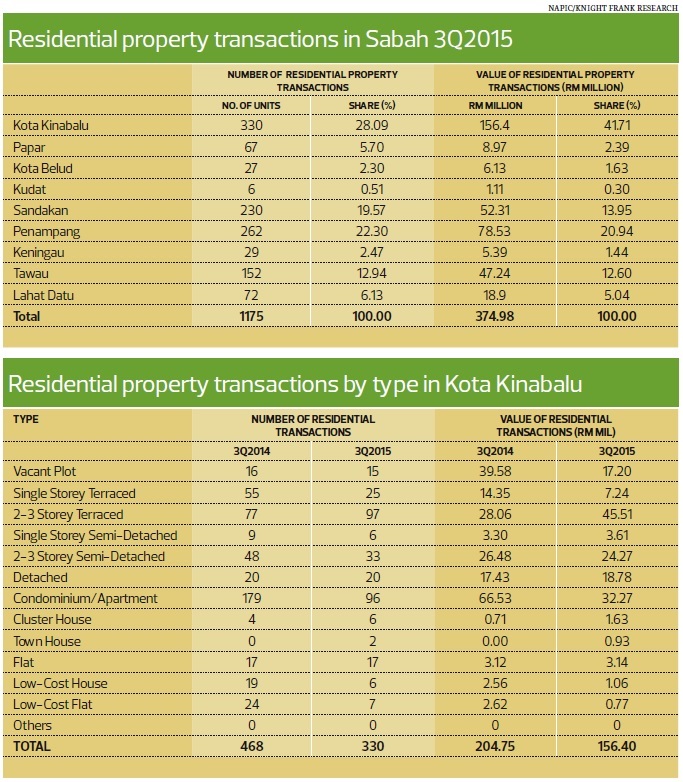

In addition, recent launches such as Gamuda Land’s condominium development in Inanam, Hap Seng Land’s Kingfisher condominiums in Inanam and Putatan, as well as Kinsabina’s Casablanca gated and landed development in Kolombong have garnered good response.
Another upcoming development he highlights is Damai Hill Condominium by Wijaya Daya, which comprises a luxury high-rise on high ground in the heart of Damai.
Popular areas in Kota Kinabalu, according to Tokuzip, are Damai and Luyang. These areas, he explains, resemble Damansara in Petaling Jaya as they are mature townships with nearby amenities such as commercial areas (Damai Plaza, Damai Point, Taman Foh Sang), wet market (at Foh Sang and Dah Yeh Villa), medical centre (Hospital Queen Elizabeth 2, KPJ Damai Specialist, KK Specialist, Sabah Medical Centre), schools (Thsung Tsin Secondary, Kian Kok Secondary, Kinabalu International School, SAYFOL), and banks.
Other popular areas are Signal Hill and Likas Bay, which offers high-rise developments such as the Peak Vista, Peak Soho and Bay 21. According to Tokuzip, these developments enjoy good rental returns and high capital appreciation with a good track record. The areas are just a stone’s throw from the city and have a great Likas Bay seaview.
This article first appeared in City & Country, a pullout of The Edge Malaysia Weekly, on Feb 1, 2016. Subscribe here for your personal copy.
TOP PICKS BY EDGEPROP
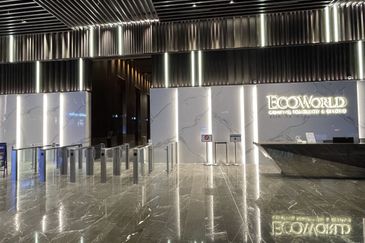
The Stride Strata Office @ BBCC
Pudu, Kuala Lumpur
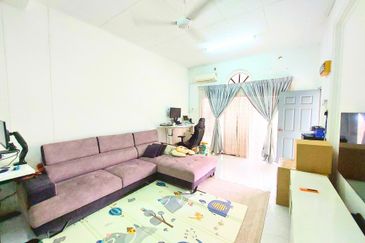
Seksyen 4, Kota Damansara
Kota Damansara, Selangor
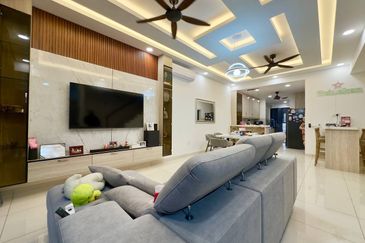
Elmina Green Three @ City of Elmina
Sungai Buloh, Selangor
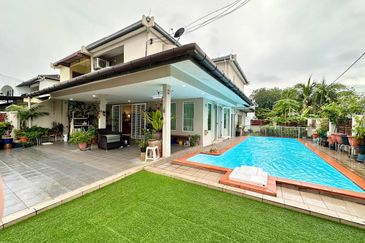
SS 21, Damansara Utama
Petaling Jaya, Selangor

Pearl Villa Townhouse
Bandar Saujana Putra, Selangor
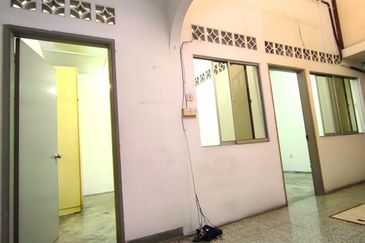
Happy Garden (Taman Gembira)
Kuchai Lama, Kuala Lumpur


